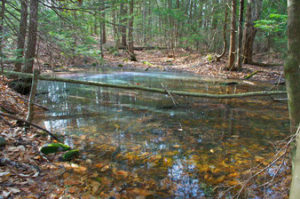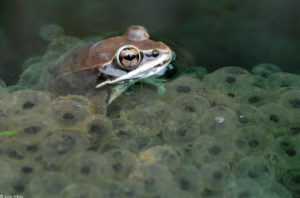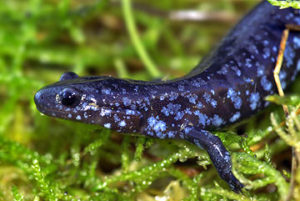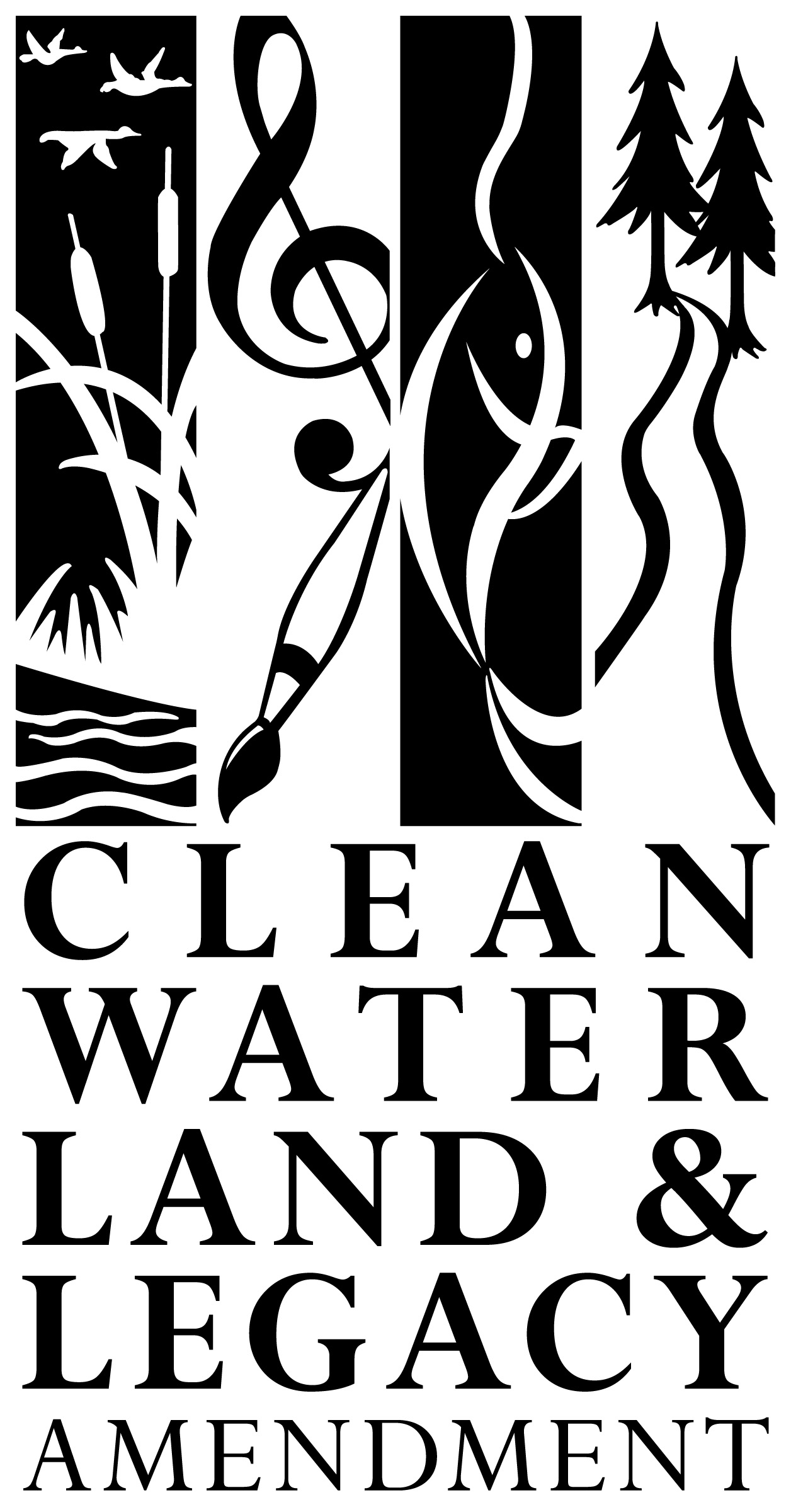This piece first appeared in our 2018 Landowner Newsletter.
A “Vernal Pool,” You Say?

Forested vernal pool. Photo credit: Distant Hill Gardens.
Vernal pools (also known as ephemeral pools) are seasonal wetlands that provide essential habitat for wildlife, serving as the primary breeding ground for several species of amphibians and invertebrates, and important foraging habitat for many reptiles, mammals and birds. They can be found in a number of locations, including fields, marshes, ditches, river floodplains and gravel pits, but are most commonly found in isolated depressions within forests. Despite being an overlooked habitat type, vernal pools are abundant—it is estimated that more than 250,000 are located statewide.
One of the main reasons vernal pools succeed as breeding habitat is due to the fact that they are typically isolated from other waterbodies and are dry during long periods during the year. Consequently, they are free of fish—a significant predator of eggs and larvae. In addition, vernal pools are typically characterized by the presence of certain species. In Minnesota, common inhabitants include: blue-spotted salamander, wood frog, western/boreal chorus frog, and fairy shrimp. Vernal pools are also recognized as important habitat for the state threatened Blanding’s turtle.
Locating Vernal Pools on Your Land

Wood frog with egg mass. Photo credit: John White.
The best time of year to search for vernal pools on your land is during mid to late spring once the snow has melted and the ground has begun to thaw. Because springtime reptile and amphibian movement is strongly correlated with weather conditions, keep an eye on the forecast during this time—prolonged air temperatures above 40°F and warm rains will trigger arousal from hibernation. Before heading into the field, a great way to prepare for vernal pool identification is by spending some time familiarizing yourself with the species that inhabit vernal pools including their appearance at different life stages (e.g., egg, larval & adult).
When heading out to look for vernal pools, dress accordingly with rubber boots or waders and don’t forget to use your ears! Listening for chorusing wood frogs in early-spring can be a great way to lead you in the direction of a potential vernal pool (tip: Google “wood frog chorus”- a YouTube video is the first result and provides both the sound of wood frogs calling and a good depiction of a forested vernal pool).
Do bear in mind that adult amphibians usually do not linger in vernal pools for very long after breeding, so be prepared to look for eggs, larvae and juveniles as well. Fairy shrimp are small crustaceans (0.5–1.0 in. in length) and tend to blend in, especially in pools with a leaf litter substrate, so be patient and still in your observations. Finally, always be mindful that, while some temporary disturbance is inevitable, strive for minimal disruption of the pool and minimize handling of animals.
I Think I Found a Vernal Pool, Now What?

Blue-spotted salamander. Photo credit: NHFG.
From a stewardship perspective, there are a number of habitat management best practices to consider when managing land where vernal pools are present:
- When conducting any work near vernal pools, operate equipment only when soils are frozen (winter) or very dry (summer) to avoid creating ruts and skid roads that collect or change the flow of water. These disturbances can influence the timing of wet/dry periods in a vernal pool, altering the species that can breed there.
- Avoid overharvesting in or around vernal pools. Removing the shade of the tree canopy can heat up the air, soil and water in the pool, change the period of time that water remains in the pool, and influence which species can survive there.
- Consult a licensed forester (and your easement!) before conducting a timber harvest on your property. Understand and follow all laws pertaining to tree harvesting near wetlands and waterbodies.
For More Information and Resources:
For those interested in obtaining assistance with wildlife habitat management specific to your own land, be it vernal pool-related or otherwise, consult with your local DNR or SWCD office. For more information regarding vernal pools and specific management strategies, there are a number of great resources available online from the following groups: the Massachusetts Department of Fisheries and Wildlife, the U.S. Army Corps of Engineers, and the University of New Hampshire Cooperative Extension.





